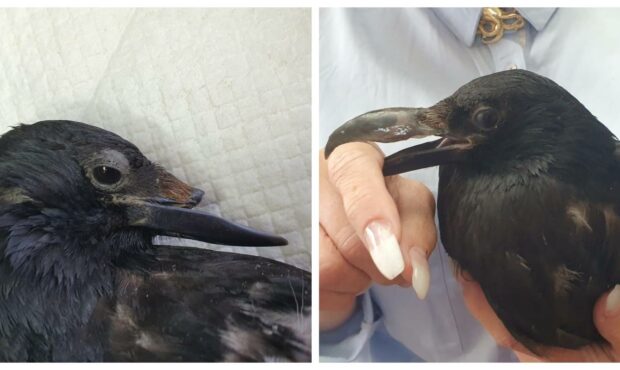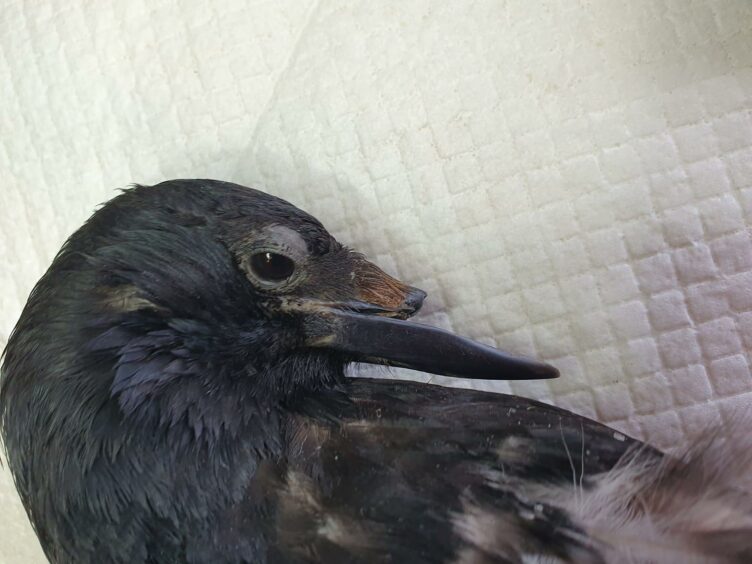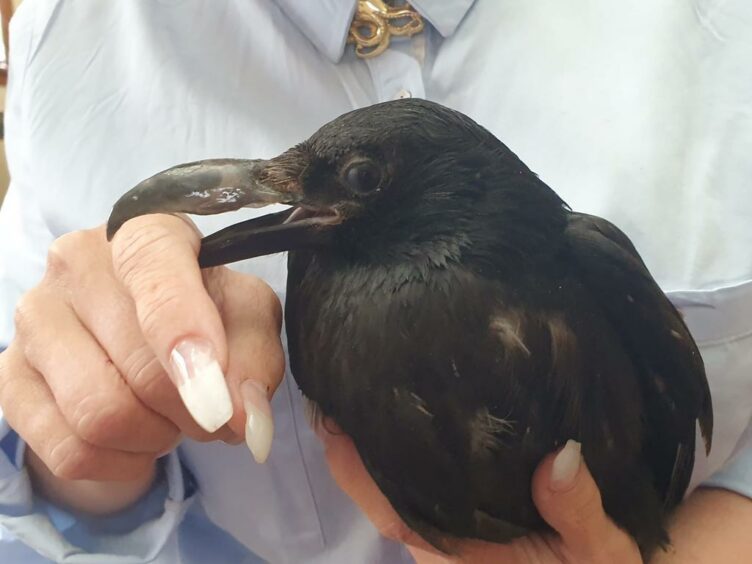An injured crow that lost part of her beak in a vehicle collision has been given an artificial replacement thanks to a Highland rescue centre.
Glory the carrion crow was taken into the care of Blue Highlands Bird Rescue in Brora after being hit by a vehicle a few days ago.
When the animal arrived, her upper beak was almost completely ripped off, making it difficult for her to eat or preen herself.
But after a simple procedure, the young bird has been fitted with a handmade acrylic prosthetic and is now recovering from her ordeal.
Lady Hadassah Broscova-Righetti, founding director of the Blue Highlands Bird Rescue, said seeing Glory happily eating and playing again has been heartwarming.
She said: “She was hurt in a vehicle impact, about 55% of the birds that we get in are from vehicle impacts.
“She’s recovering magnificently, she’s doing everything on her own, playing happily, and preening.”
The fake beak has been coloured a natural black, which Lady Broscova-Righetti says will hopefully stop other curious crows “picking on” Glory.
She continued: “They always last for a little while in the wild, maybe a month or two, with beak damage like this, but they eventually die of things like respiratory infections, or starvation, but it depends on the kind of bird and what their food source is.
“Glory is very young, maybe eight to 12 weeks old.
“Everything has gone beautifully, she’s been outside today playing around and eating, and won’t need any care for at least eight weeks, maybe 12.
“When she had it on she gave me a little bite, and looked surprised, it was so charming to see and it shows how much that it’s ingrained in these birds that this is what beaks are made to do.”
How does the replacement beak process work, and when will Glory be back in the wild?
The rescue centre used a mould taken from the upper beak of another crow, of a similar age and size, to help form Glory’s new nose.
Made of acrylic, the team then use tools to cut the beak replacement into shape.
The artificial beak will be replaced periodically, and eventually, Glory’s natural upper beak will grow in, guided by the acrylic to grow as it would naturally, and she will no longer need a prosthetic and will be able to return to the wild.
However, the process will take some time.
Following her beak reconstruction, Glory the Carrion Crow is able to eat properly once again. 28/9/21 #birdrescue #highlandbirds pic.twitter.com/KGpn8Ztys2
— Blue Highlands Bird Rescue (@bhbirdrescue) September 28, 2021
Lady Broscova-Righetti continued: “We use a specialised acrylic that’s approved for human use, and it’s sealed with a special gel sealant to stop anything growing on the semi-porous surface.
“We don’t like 3D printed beaks, they pop off and need to be affixed with other means.
“The beak will grow off every eight to twelve weeks, and we’ll go back in and reshape it.
“After a one to two year period, her beak will have completely grown out, and she won’t need any more prosthesis at the end of that period.
“She’s going to grow it slowly because of the kind of bird she is, owl beaks for example grow much faster.
“The good thing about this method is you know within 20 minutes if it’s got a proper seal, if it’s functional, and how strong it is, by telling how well the bird is using it or if they’re wincing at all.
“We expect that within a year she’ll be back out and about again.”
“We hope to get a little bit more awareness out about this particular procedure, because there’s a lot of birds in other centres across the UK that would really benefit from this intervention.
“They can really help birds that are in agony get back to the lives they deserve.”
How can I help birds in need?
To find out more about Blue Highlands Bird Rescue and donate, click here.


